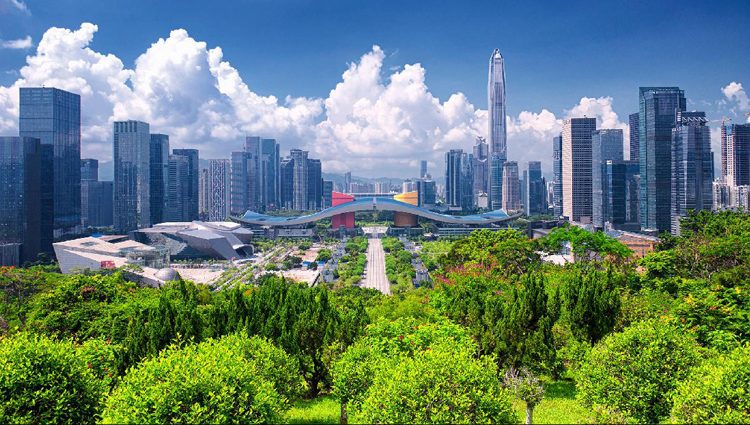Nestled along the southern coast of China, Shenzhen is a thriving metropolis that truly captivates its visitors with its unique blend of modernity and rich cultural heritage. Known as China’s Silicon Valley, this city has an epic story to tell about its transformation from a humble fishing village into a bustling economic hub, becoming one of the fastest-growing cities in the world.
Its extraordinary development and astonishing skyline make it a must-visit destination for anyone seeking awe-inspiring experiences. With its vibrant cityscape, cutting-edge technology, and a multitude of attractions, Shenzhen is sure to leave a lasting impression on all who lay eyes on it.
However, visiting the city today, there are plenty of other stories to tell about how cities can embrace the future while maintaining their human touch. As one of the most rapidly developing cities in the world, Shenzhen distinguishes itself with a commitment to creating a city with a human face.
On its way to innovation and progress, Shenzhen also prioritises the well-being and quality of life of its residents and visitors. With its green spaces, pedestrian-friendly streets, and an emphasis on sustainable development, Shenzhen offers a balance between urban modernity and harmonious coexistence with nature. Whether you are strolling through its beautifully landscaped parks or marveling at its architectural wonders, you will be captivated by Shenzhen’s unique ability to combine cutting-edge technology with a warm and welcoming atmosphere.
Shenzhen has transformed itself from a small fishing village into a global economic powerhouse in just over 40 years after the city was designated as a special economic zone competing economically with Hong Kong to accommodate China’s burgeoning manufacturing industry. It has experienced rapid economic, social, and environmental transformation and is described as being innovative, inclusive, young, and high-tech.
Today, the city stands as a symbol of China’s reform and opening up, modernisation, and globalisation. It turned into a magnet for Chinese and foreign investments, hosting 10.998 national hi-tech companies and 229 Fortune 500 companies, including IBM, Walmart, and Microsoft.
It turned into one of the most developed cities in China with its economy aggregate top 5 among Asian cities, while its per capita GDP ranks first in mainland China and its total export volume led the nation for 29 straight years. The city also occupies an important position in China’s financial services, foreign trade, and maritime transport.
The city’s tendency for innovation and its vibrant economic and technological activities qualified the city to be one of the ten Asian Cities of the future.
On its way to achieving its supremacy in economic and innovation fields, Shenzhen encountered many challenges in the process of rapid development, including environmental bottlenecks and pressures brought about by overpopulation, excessive expansion, and high density. The city had to address problems of land, resources, environment, and population. Shenzhen has constructed an ecocity that includes energy structure adjustment and energy efficiency improvement, increase in the use of clean energies, reduction of carbon emissions, industrial transformation and upgrading, as well as green infrastructure system construction and green building promotion for achieving environmentally friendly development.
The city succeeded in turning climate mitigation into an opportunity for economic development by creating leading industry champions around innovations for carbon emissions reduction, efficient energy storage, new energy transport, renewable energy, and related industry segments such as batteries and battery recycling. Shenzhen is already home to BYD, one of China’s foremost e-mobility companies.
Despite its numerous skyscrapers, ample green space ensures the city’s air quality and the environment is one of the best in the nation. Thanks to rational planning and strict control, 43.40 per cent of the urban space is covered by green zones, and about half of the urban land is marked for ecological protection. The number of new energy vehicles exceeds 666,000 with a penetration rate of over 50 per cent. There was no wonder to be picked up as a Model City for the Protection of the Ozone Layer and a National Model City for Environmental Protection.
Shenzhen also succeeded to develop from a cultural desert to a city of libraries, to a city with abundant cultural institutions and resources including museums, libraries, theatres, concert halls, and art galleries, in response to the needs of city residents and the booming tourism industry. Since Shenzhen set out to build a city of culture in 2003, its cultural and creative industry has grown at an average annual rate of over 18 per cent, becoming an important engine of stable development.
Shenzhen’s passion for innovation and research is a key factor in the success of its hi-tech enterprises. However, another reason for what is happening in Shenzhen was outlined by Chinese President Xi Jinping, who elaborated during one of his visits to the city that “People’s happiness should be the criteria for evaluating the result of reform. The fruits of reform and opening up should benefit the general public.”
Thanks to such a vision, Shenzhen is turning into a city that not only looks towards the future but ensures that humans remain at the heart of its vision.






Discussion about this post